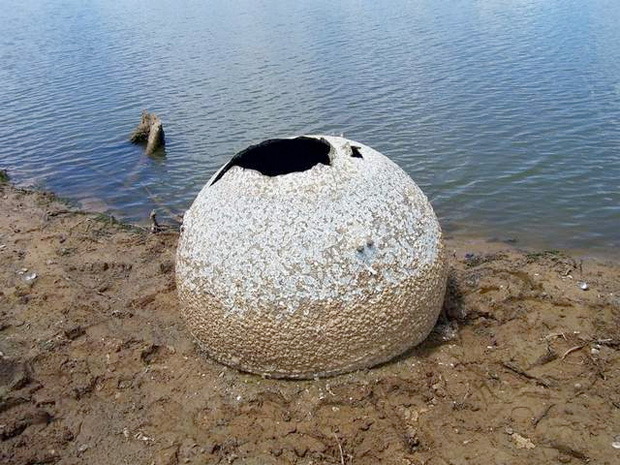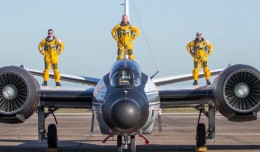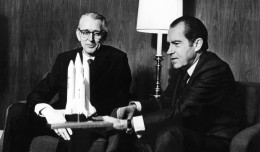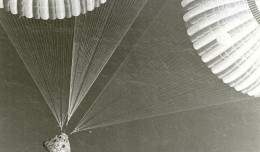Previously undiscovered debris from NASA’s Space Shuttle Columbia was found in Lake Nacogdoches in eastern Texas last week, a spokeswoman for the agency confirmed on Tuesday.

Space Shuttle Columbia power reactant storage and distribution found in Lake Nacogdoches. (Photo by Nacogdoches Police Department)
Lisa Malone, who is the Director of Public Affairs at NASA’s John F. Kennedy Space Center, said the agency received a phone call from the Nacogdoches Sheriff’s Office in Texas last week which informed them of the discovery of the debris. It was later identified as Columbia’s power reactant storage and distribution (PRSD) system, which is 4 feet (1.2 meter) in diameter and provides power and water for shuttle missions.
The debris was not previously found because the water in the lake covered it, until now. “There has been a drought out there and the lake levels have been dropping which then exposed the tank,” said Malone.
NASA is still working out a plan to get the object out of the lake and eventually transport it back to Florida. “The ground is real soft and we can’t even get out there. The ground wouldn’t support a heavy vehicle to get it out there and we think the tank itself is full of mud,” Malone said. “We eventually would like to move it back to Florida and store it with the rest of the debris which is inside the Vehicle Assembly Building here at the Kennedy Space Center.”
However, Malone said there is no hurry to remove the debris because it is neither toxic nor a hazard to anyone. “[But] it probably has some sharp edges,” she added.
The Space Shuttle Columbia disintegrated over Texas during its re-entry into the Earth’s atmosphere on February 1, 2003, shortly before it was scheduled to conclude its 28th mission. The Columbia disaster resulted in the death of all seven crew members and debris fell to Earth in Texas as well as some parts of Louisiana.
According to Malone, several times a year, people think they have found a piece of debris from Columbia. NASA engineers then go through a process to see if it really is a part of the Columbia shuttle or not. If it is, they ship it back to Florida.







